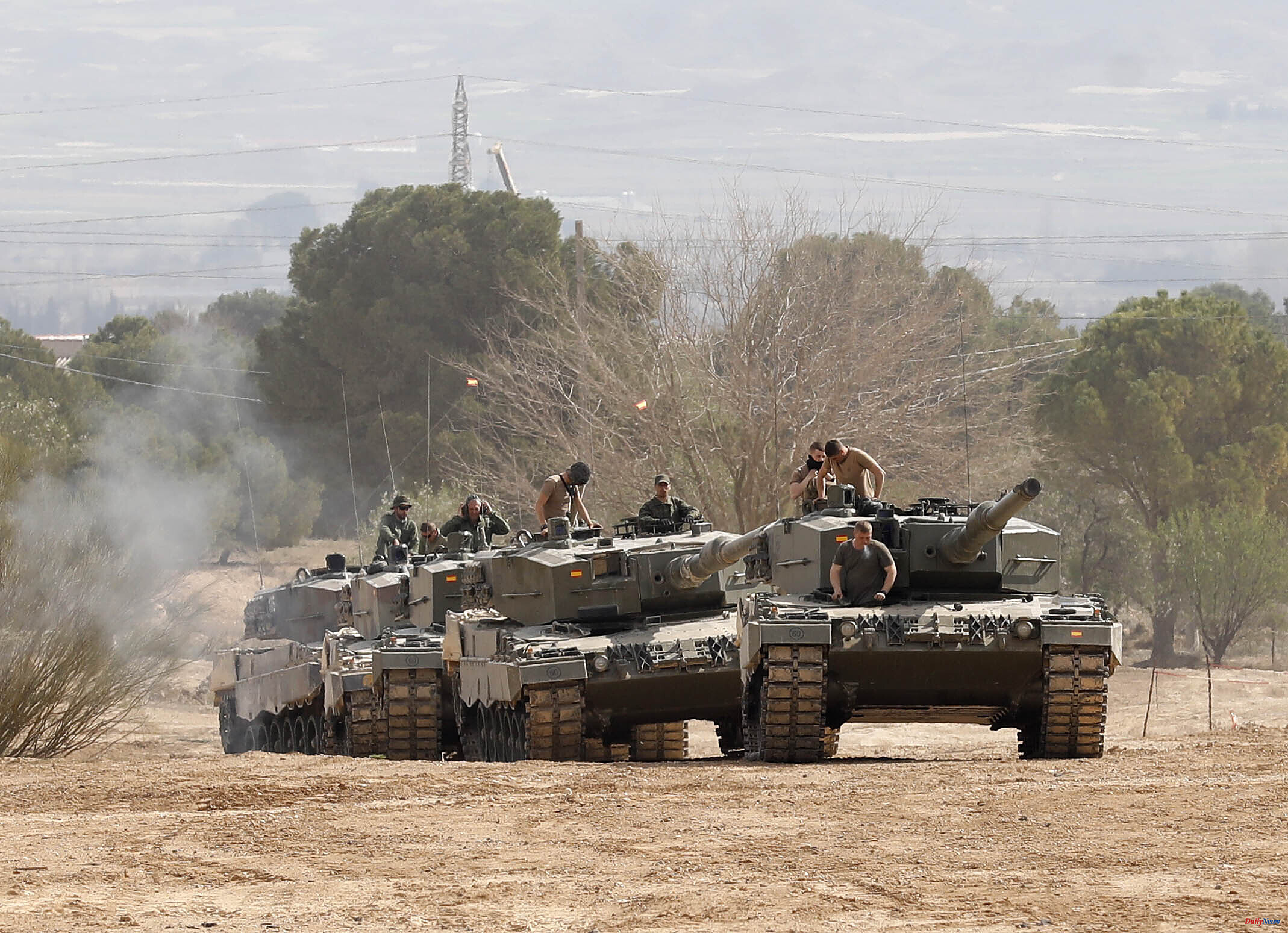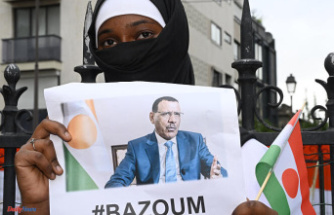A group of Spanish soldiers put their signature on a national banner supported on a troop transport vehicle. At his side, several Ukrainian interpreters wait patiently for them to finish dedicating the memory that is going to Ukraine. They are a dozen of the 30 officers of the Alcántara de Melilla Regiment who have spent a month at the San Gregorio Training Center training Ukrainian soldiers. On the 15th, the training of 55 soldiers will finish, who will head to Poland that day after having acquired knowledge in the management and maintenance of the Leopard 2A4, the German-made combat tank model of which Spain is preparing six for shipment to the forehead. From the moment they land in Poland, they will only have to wait a few weeks for the armored vehicles to arrive and coordinate with their compatriots to prepare the counteroffensive.
But on the morning of this sunny and hot Tuesday in San Gregorio, those who used to crowd around the hood of a car next to the national banner now follow the instructions of the Spanish captain, who is explaining what the day's maneuvers will consist of. . Half an hour passes after ten in the morning and on a map he details the path to follow, an exercise in which they will go through a supposed minefield and face the support of the Enemy Unit, essential to make the exercise more real.
The 55 soldiers arrived in Zaragoza on February 16 to participate in a training in Leopard. The plan was organized before they came and the Spanish Ministry of Defense already knew the profile of the students: all men, soldiers or reservists between the ages of 21 and 60. They have all been on the front line of combat, in tanks. Of them, 15 are mechanics and 40 tankers who have been divided into ten crews - made up of four men - to drive a car. Thus, each crew is made up of a driver, a loader, a shooter and a vehicle manager. The mechanics, for their part, have received training in three groups of five specializing in mechanics, electronics and weapons. "The fact that they had previous experience in cars has been essential to be able to instruct them in four weeks," says Captain Contreras, head of the training module, who has come with his companions from the Melilla Infantry Regiment, the only one that still uses the Leopards. 2A4 that we are going to send to Ukraine.
Despite their prior knowledge, the soldiers have faced four weeks of intense training, with classes twelve hours a day, six and a half days a week. They only had Saturday afternoon free to rest. The result is a unit that "is perfectly qualified to go to the battlefield," says Contreras, who does not know when we will send the Spanish Leopards, although he does admit that what is desirable "is for these soldiers to drive the Spanish tanks," which is in the that have been formed
These Leopards - 55-ton moles that creak when starting - have higher capacities than those used at the front. In fact, they have a range of two kilometers more than the Ukrainian battleships. Also more shooting capacity, since fully loaded they can hold more than 50 projectiles. However, when making them operational they need close logistical support, they should not go alone. Vehicles for transporting fuel, since the tank is filled with a thousand liters and consumes four per kilometer, mechanics in other cars to carry out a second-echelon check, sappers for quicker steps and even air support in combat would be ideal for more efficient operation. optimum of these Leopard.
Although the Ukrainians prefer "less theoretical training and more practice to take advantage of the opportunity", in Spain they have spent practically the entire first two weeks in an Indra simulator. In fact, they have completed their training in San Gregorio because it is the only field in Spain that still has a simulator set up for this Leopard model. In refrigerated facilities there are two static driving simulators, one dynamic and four tower simulators, where three of the crew carry out exercises guided by monitors. "The simulators allow them to take as many shots as they can," recalls Lieutenant Colonel Román, in charge of the mission.
The following weeks have seen maneuvers on the ground, which have included live fire. Not this Monday, when while the Leopards are refueling, some Pizarros from the Extremadura Brigade queue up to be washed at the exit of the Maneuver Field. The soldiers have divided into two groups of 20 to begin the day's training. Spain has allocated 10 Leopards for this formation, 6 were already in the Cenad, and four are from the Toledo Infantry Academy. It has been done this way so that there is always one operational, because breakdowns are frequent. In fact, the crew inspects the vehicle before leaving, during the first few meters of travel, and at the end of the mission. Every day.
The lieutenant in command of the mission - a 21-year-old who has just finished military training in Ukraine - gives the order to the first Leopard to get going. Before getting into the turret, he forms a heart with his hands to thank Spain for the formation. They will be on maneuvers until midnight and on Wednesday they will set course for Poland. There, they will wait for the order to go to fight at the front, with Spanish Leopards and national formation.
According to the criteria of The Trust Project












